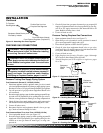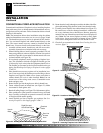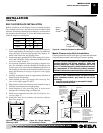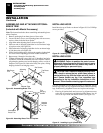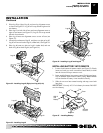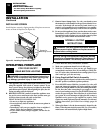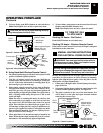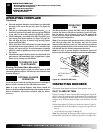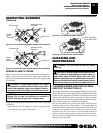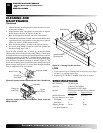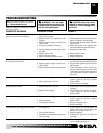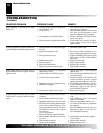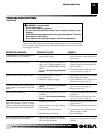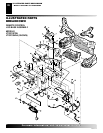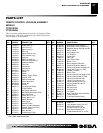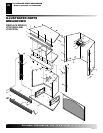Special offers from our partners!

Find Replacement BBQ Parts for 20,308 Models. Repair your BBQ today.
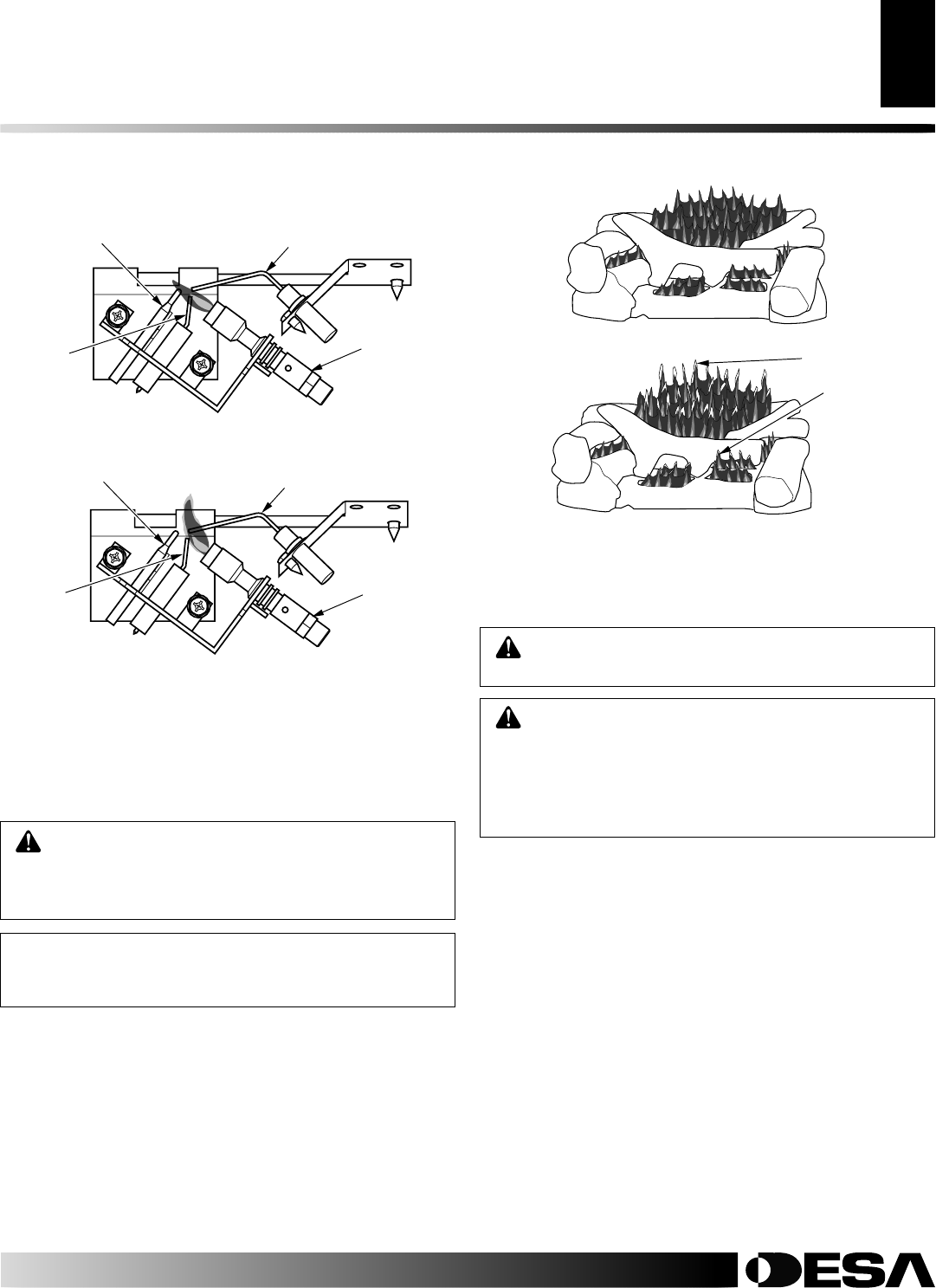
110112-01A
For more information, visit www.desatech.com
For more information, visit www.desatech.com
21
21
CLEANING AND
MAINTENANCE
INSPECTING BURNERS
Burner Flame Patterns
CLEANING AND MAINTENANCE
Cleaning Burner Injector Holder
BURNER FLAME PATTERNS
Figure 43 shows correct front and/or middle burner flame patterns.
Figure 44 shows incorrect front and/or middle burner flame pat-
terns. The incorrect burner flame patterns show yellow tipping at top
of blue flame.
WARNING: If yellow tipping occurs, your heater
could produce increased levels of carbon monoxide. If
burner flame patterns show yellow tipping, follow in-
structions below. Yellow flame on rear burner is normal.
NOTICE: Do not mistake orange flames with yellow
tipping. Dirt or other fine particles are burned by
heater, causing brief patches of orange flame.
If front and/or middle burner flame patterns are incorrect, as shown
in Figure 44
• turn heater off (see To Turn Off Gas to Appliance, pages 19 or 20
• see Troubleshooting, pages 23 through 25
INSPECTING BURNERS
Continued
Yellow Tipping At
Top of Blue Flame
Figure 43 - Correct Burner Flame Patterns
Figure 44 - Incorrect Burner Flame Patterns
WARNING: Turn off heater and let cool before
cleaning.
CAUTION: You must keep control areas, burners,
and circulating air passageways of heater clean. In-
spect these areas of heater before each use. Have
heater inspected yearly by a qualified service person.
Heater may need more frequent cleaning due to exces-
sive lint from carpeting, pet hair, bedding material, etc.
CLEANING BURNER INJECTOR HOLDERS
AND PILOT AIR INLET HOLES
The primary air inlet holes allow the proper amount of air to mix with
the gas. This provides a clean burning flame. Keep these holes clear
of dust, dirt, lint, and pet hair. Clean these air inlet holes prior to each
heating season. Blocked air holes will create soot. We recommend
that you clean the unit every three months during operation and have
heater inspected yearly by a qualified service person.
We also recommend that you keep the burner tubes and pilot
assembly clean and free of dust and dirt. To clean these parts we
recommend using compressed air no greater than 30 PSI. Your local
computer store, hardware store, or home center may carry com-
pressed air in a can. You can use a vacuum cleaner in the blow
position. If using compressed air in a can, please follow the direc-
tions on the can. If you don't follow directions on the can, you could
damage the pilot assembly.
Pilot Burner
Thermocouple
Figure 41 - Correct Pilot Flame Pattern (Propane/LP Pilot Shown)
Figure 42 - Incorrect Pilot Flame Pattern (Natural Gas Pilot Shown)
Pilot Burner
Manual
Ignitor
Electrode
Automatic Ignitor
Electrode
Thermocouple
Manual
Ignitor
Electrode
Automatic Ignitor
Electrode



